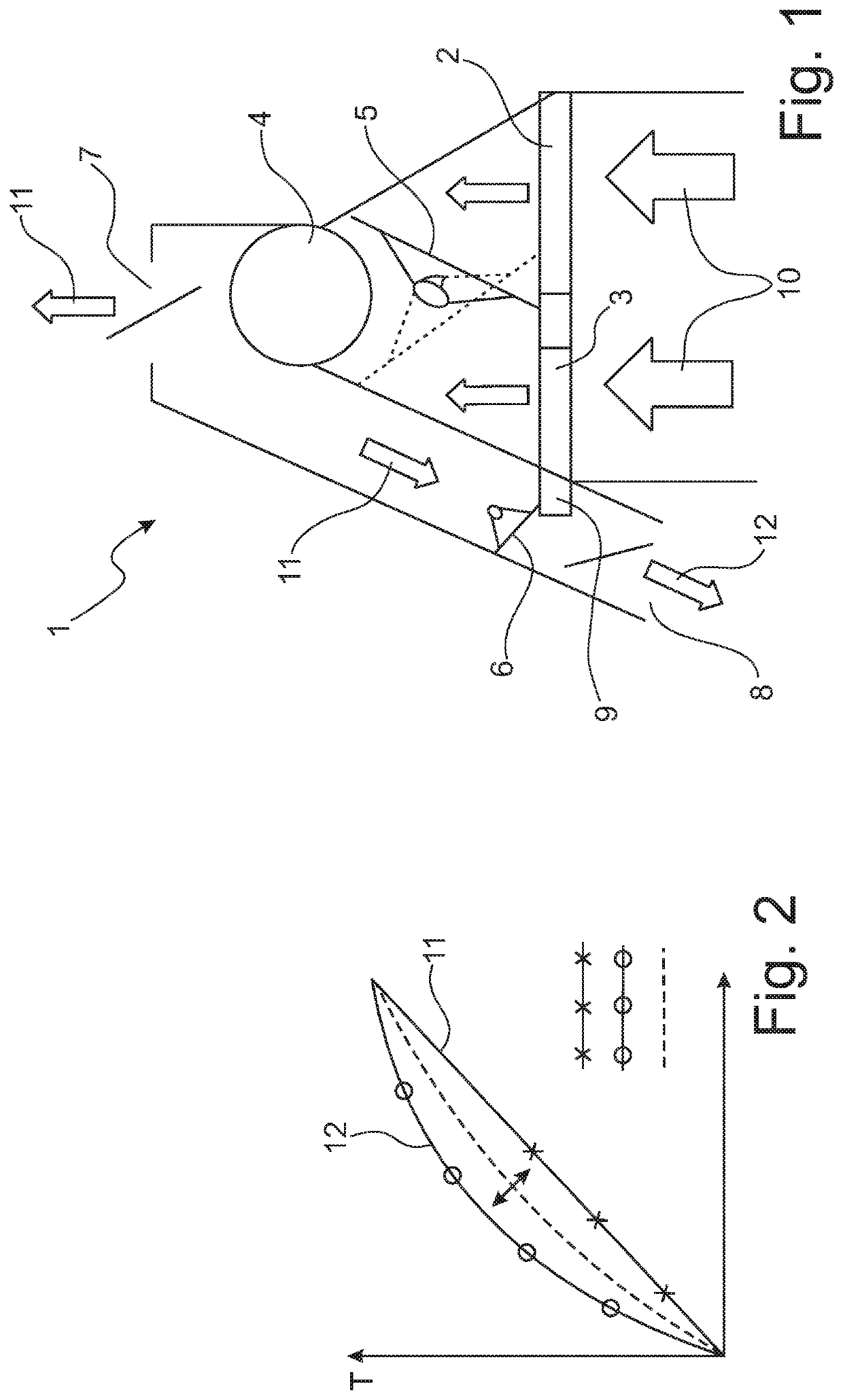Vehicle air conditioning unit with heat exchanger arranged in suction side
a technology of heat exchanger and vehicle air conditioner, which is applied in the direction of vehicle components, vehicle heating/cooling devices, transportation and packaging, etc., can solve the problems of increased technical expenditure, higher technical complexity, and increased cost, so as to reduce space requirements, increase heating and cooling capacity, and reduce installation space requirements
- Summary
- Abstract
- Description
- Claims
- Application Information
AI Technical Summary
Benefits of technology
Problems solved by technology
Method used
Image
Examples
Embodiment Construction
[0031]In FIG. 1 is depicted an implementation of a vehicle climate control unit 1 in which the suction-side disposition of the heat exchangers is realized. The vehicle climate control unit 1 comprises, firstly, an evaporator 2 and a heating heat exchanger with a preheat zone 3, The two heat exchangers are located at the suction side with respect to a blower 4, across which the climate control inflow 10 is suctioned into the vehicle climate control unit 1. The air of the climate control inflow 10 in the depicted implementation flows in parallel through the evaporator 2 and the preheat zone 3 of the heating heat exchanger. Between the two heat exchangers 2, 3 and the blower 4 is disposed a main temperature louver 5 that controls the ratio of the air volume flows as a function of the louver position.
[0032]The complete heating of the air flowing toward the blower 4 as well as also the complete cooling of the air flowing toward the blower 4 as well as also proportional mixing of cooled a...
PUM
 Login to View More
Login to View More Abstract
Description
Claims
Application Information
 Login to View More
Login to View More - R&D
- Intellectual Property
- Life Sciences
- Materials
- Tech Scout
- Unparalleled Data Quality
- Higher Quality Content
- 60% Fewer Hallucinations
Browse by: Latest US Patents, China's latest patents, Technical Efficacy Thesaurus, Application Domain, Technology Topic, Popular Technical Reports.
© 2025 PatSnap. All rights reserved.Legal|Privacy policy|Modern Slavery Act Transparency Statement|Sitemap|About US| Contact US: help@patsnap.com

